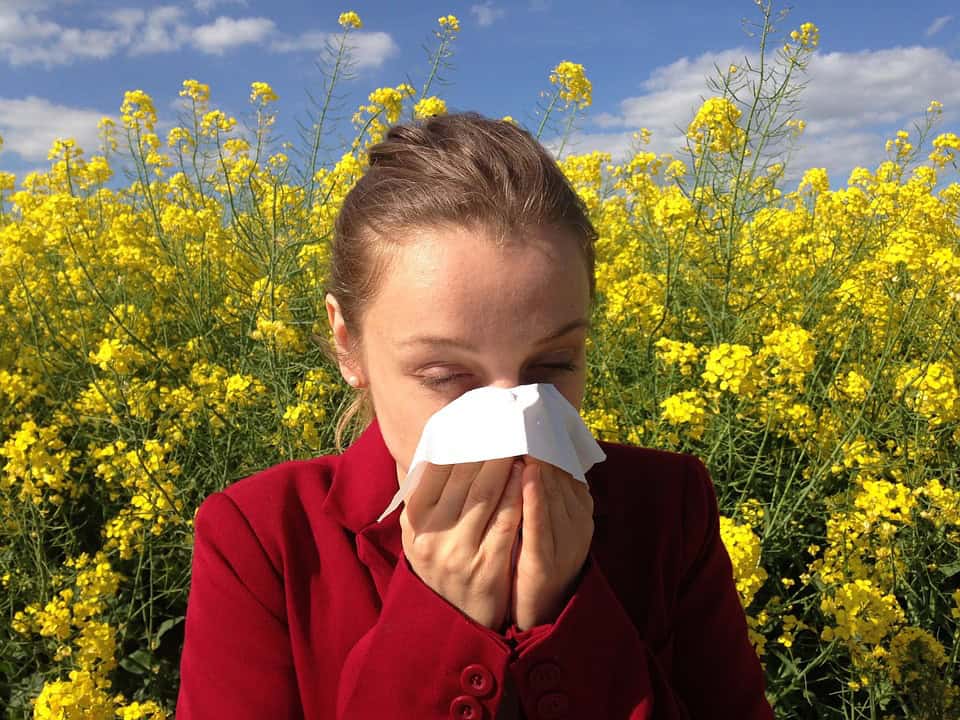By Kristen M. Sikorski, MD
If you sneeze your way through spring, you are not alone. More than 50 million people nationwide suffer from seasonal allergic rhinitis — commonly referred to as hay fever or seasonal allergies— according to the American College of Allergy, Asthma and Immunology.
And that number is only increasing as the pollen season gets longer. Fortunately, however, there are effective ways to treat and manage seasonal allergies, from practical steps like monitoring pollen counts to medications and immunotherapy.
An Overreaction
Seasonal allergies occur when the body’s immune system overacts to allergens in the air, such as pollen from trees, grass, weeds, or mold spores. These allergens trigger a release of histamine and other chemicals in the body which leads to uncomfortable symptoms, including:
- Itching, usually in the nose, mouth, eyes, or throat.
- Sneezing.
- Red, watery eyes.
- Runny nose or postnasal drip.
- Scratchy throat.
- Fatigue.
- Headaches.
In some cases, seasonal allergies can also increase the risk of asthma and exacerbate the condition, leading to wheezing and difficulty breathing. Allergies can also contribute to ear infections and sinus infections.
The severity of seasonal allergies can vary from person to person, and even from year to year.
Some people may experience mild symptoms, while others may have more severe symptoms that affect their quality of life.
Seasonal allergies aren’t limited to spring. They typically start in late winter or early spring when trees start to bud and can continue into the summer and fall when grasses and weeds typically grow.
Identifying Triggers
Diagnosing seasonal allergies typically involves a combination of medical history, physical examination, and allergy testing. Your allergist (a doctor who specializes in treating allergies) may ask you about your symptoms, when they occur, and any triggers that seem to make them worse.
Allergy testing can help identify the specific allergens that are causing your symptoms. Skin testing involves pricking the skin, typically on the arm or back, with small amounts of common allergens and observing for a reaction.
Skin testing usually produces results within 20 minutes and is normally painless. Reactions tend to go away within a few minutes.
Once your triggers are identified, an allergist can work with you on an effective plan to treat and manage your allergies.
Treating and Managing Allergies
The best treatment for seasonal allergies is to avoid your triggers altogether. However, when that’s not possible, medications such as antihistamines, decongestants, and nasal corticosteroids can help relieve symptoms. Some medicines should be started early to help prevent symptoms before the season begins. An allergist can offer you advice for when to start medications based on your particular allergies.
For people who continue to suffer, immunotherapy may be recommended. Immunotherapy also known as allergy shots, involves regular injections of small amounts of allergens over a period of time to help the body build immunity.
In addition to medical treatment, there are several practical tips that will help you manage seasonal allergy symptoms, including:
- Monitor pollen counts. Pollen counts can vary depending on the time of day and
weather conditions. Try to stay indoors during peak pollen hours, which are usually in the early morning and on windy days. There are also several smart phone apps and online tools that can alert you when pollen counts are high in your area. - Keep windows and doors closed. Instead of opening up your home and letting pollen in,
use an air conditioner or a HEPA filter to help remove pollen from the air. - Roll up car windows. Though it is tempting to roll the car windows down on a warm,
sunny spring day, it is a surefire way to trigger allergies. Roll them up to keep pollen out. - Wash your hands and face. Washing your hands and face frequently can help remove pollen that may have accumulated on your skin. Take a shower and wash your hair if you have been outside for an extended amount of time.
- Change your clothes. Changing your clothes when you come indoors can help remove any pollen that may have accumulated on your clothing. Also, use a clothes dryer. Pollen can cling to clothing that is dried outside.
- Avoid outdoor activities. If possible, try to avoid outdoor activities during peak pollen season. If you must be outside, wear a mask or scarf to cover your nose and mouth, a hat, and sunglasses.
Don’t let allergy symptoms make you miserable this season, or any season for that matter. With help from an allergist, you can identify ways to treat your allergies and prevent symptoms.
To find a physician affiliated with Penn Medicine Princeton Health, call 888-742-7496, or visit www.princetonhcs.org.
Kristen M. Sikorski, MD, is a board certified allergist and immunologist and a member of the Medical Staff at Penn Medicine Princeton Health.

